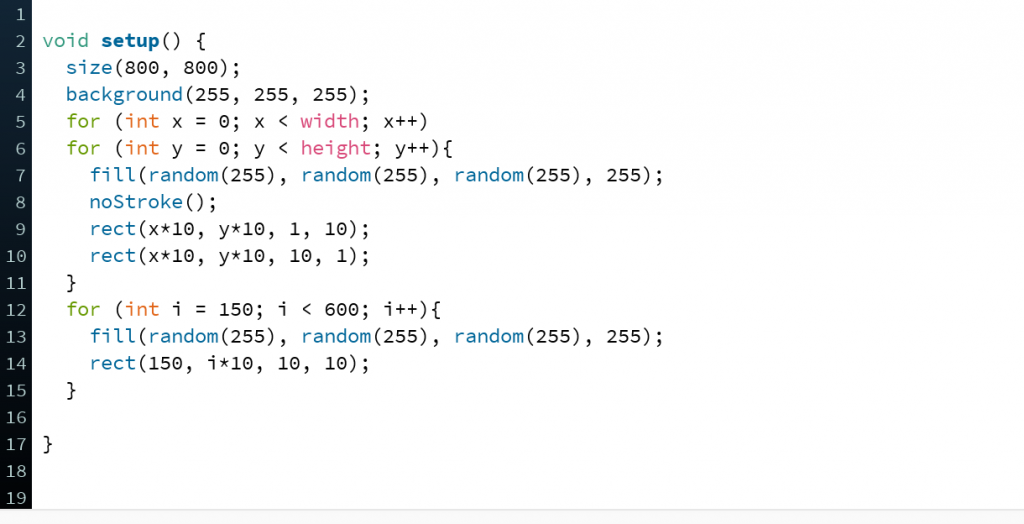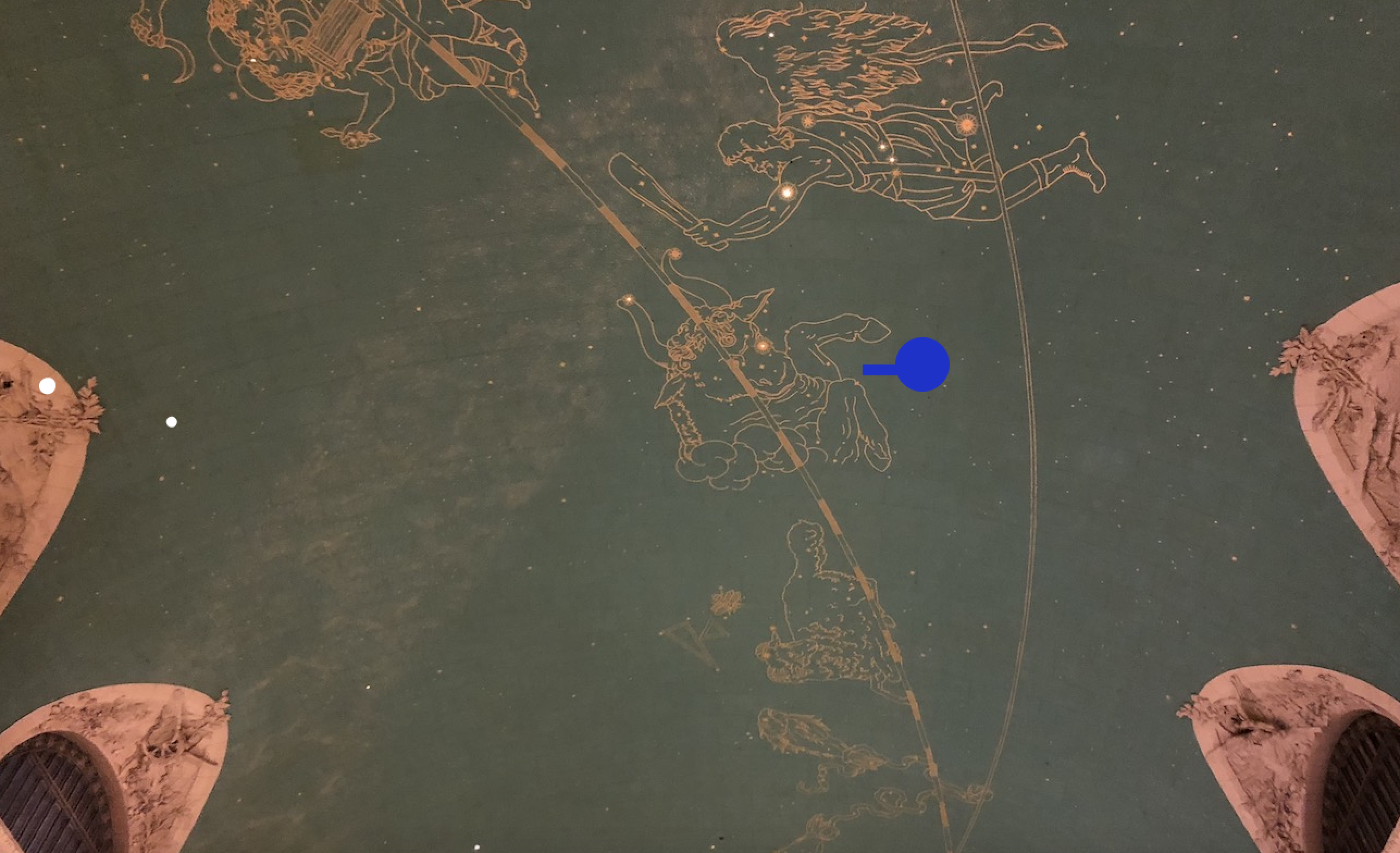
My conference work for this semester is a coded drawing machine. The mouse works as an eraser, which makes the black cover transparent and expose the colorful bottom plate. The uncovered parts is what viewers draw. The bottom plate is composed of square grids and a “100” pattern. It seems to scratch a lottery.
I chose to accomplish the conference project on Processing, first because I wanted to continue coding and developing my ability of coding. Last semester, my conference project was also a coded machine, which interacted with viewers and reflected David Rokeby’s idea about the interactive but independent relationship between machines and humans. Last project was a great milestone and pleasure for me, so I decided to continue on this path. What’s more, coding looks very cool, because most of people heard about “java”, but not everyone can use it. I enjoy the process of a further study of programming.

In terms of the subject of my project, I got inspiration from scratch art. I liked making the scratch paper and drawing on it when I was little. I thought it could be interesting to realize this process on software. Furthermore, I also got inspiration from both loop shells and brushes in our class. I used loop to create the colorful grids at the bottom and made the mouse to serve as a brush.
The viewer is supposed to be totally free when using this machine. They can draw whatever they want and control the motion of lines. The machine displays repetition to some degree, since the appearance of the brush has little change. I expect viewers to feel relaxed and surprised as they are drawing on the machine. This artistic form, scratch art, is familiar and looks childlike for some viewers. The colors of grids are satisfying and lively. Besides, when visitors see the 100 dollars, they may be surprised and wish it could be true. The machine is playful in general, which can break people’s stereotype about the monotony and tightness of machines.

I try accomplishing the goal of coding this machine step by step during the conferences. The initial step is coding the bottom grids. Then, what I am doing now is creating the “100$” pattern on the grids, which is time-consuming but allows me to know more about loop. The future plan is finishing the reading material and learning to turn part of the black cover into transparent one.

I used loop to create the pattern and fill it with random colors. It took me some time to find the exact position for each line. I especially liked the slash on “1”, because I coded each square one by one. This method worked very well. I gained a sense of achievement when I finished this slash and saw its final look.

Finally, I covered the grids with a black image. Visitors were able to make it transparent and to see the underneath pattern by pressing and moving the mouse. For me, this step required lots of researches and skills. At first, I tried using Classes, which was not the perfect way. Then I transferred to use PImage. It allowed me to create another canvas on the regular one. The project completely became a digital version of scratch paintings, because scratch paintings in paper form had the same working process — applying two layers of pastels on canvas and using sticks to scrape the upper layer.
In conclusion, this project achieved to my expectation. It is a drawing machine, which interacts with people. People are able to “erase” some simple patterns on it. It also can be regarded as a game, which resembles lottery scratch-off tickets.


